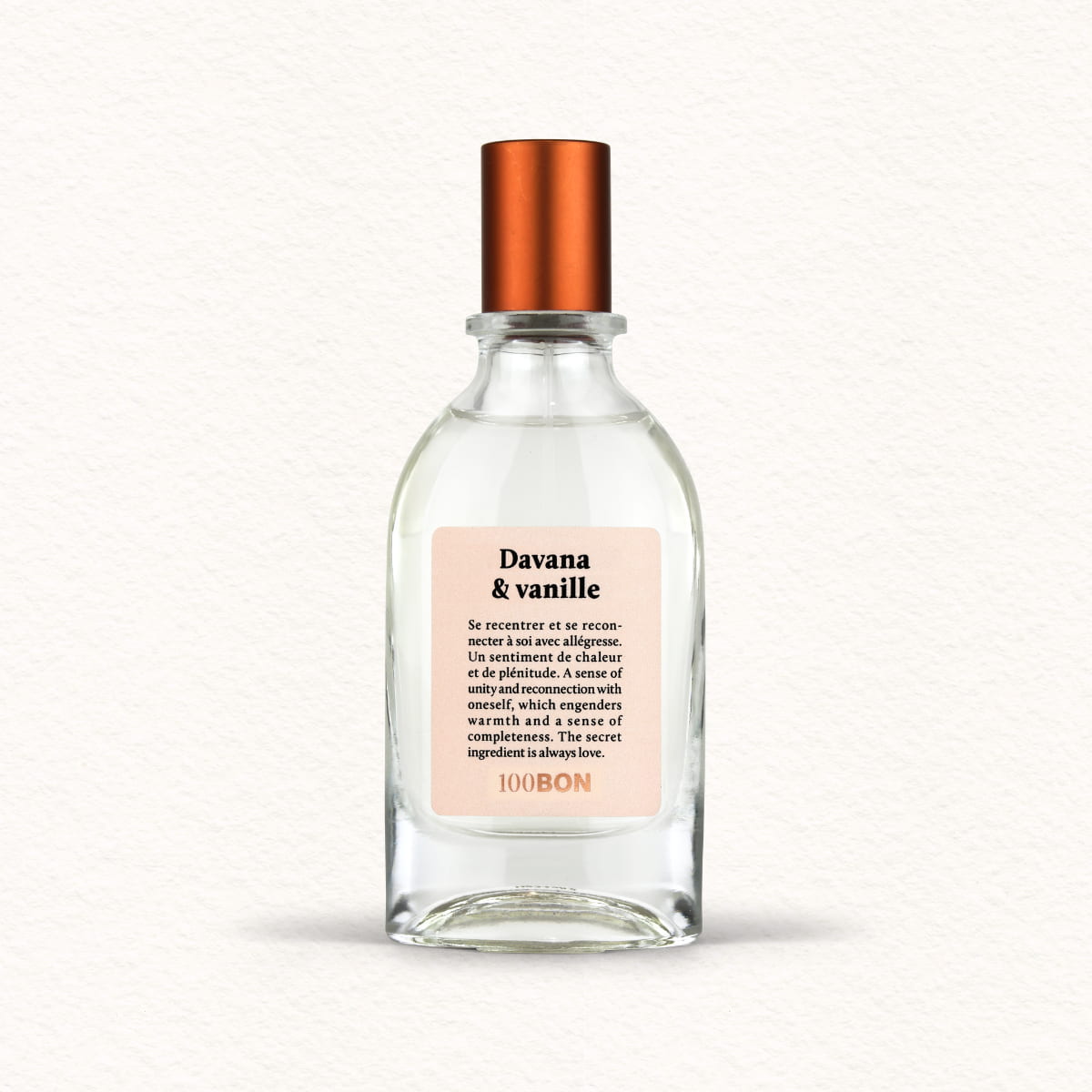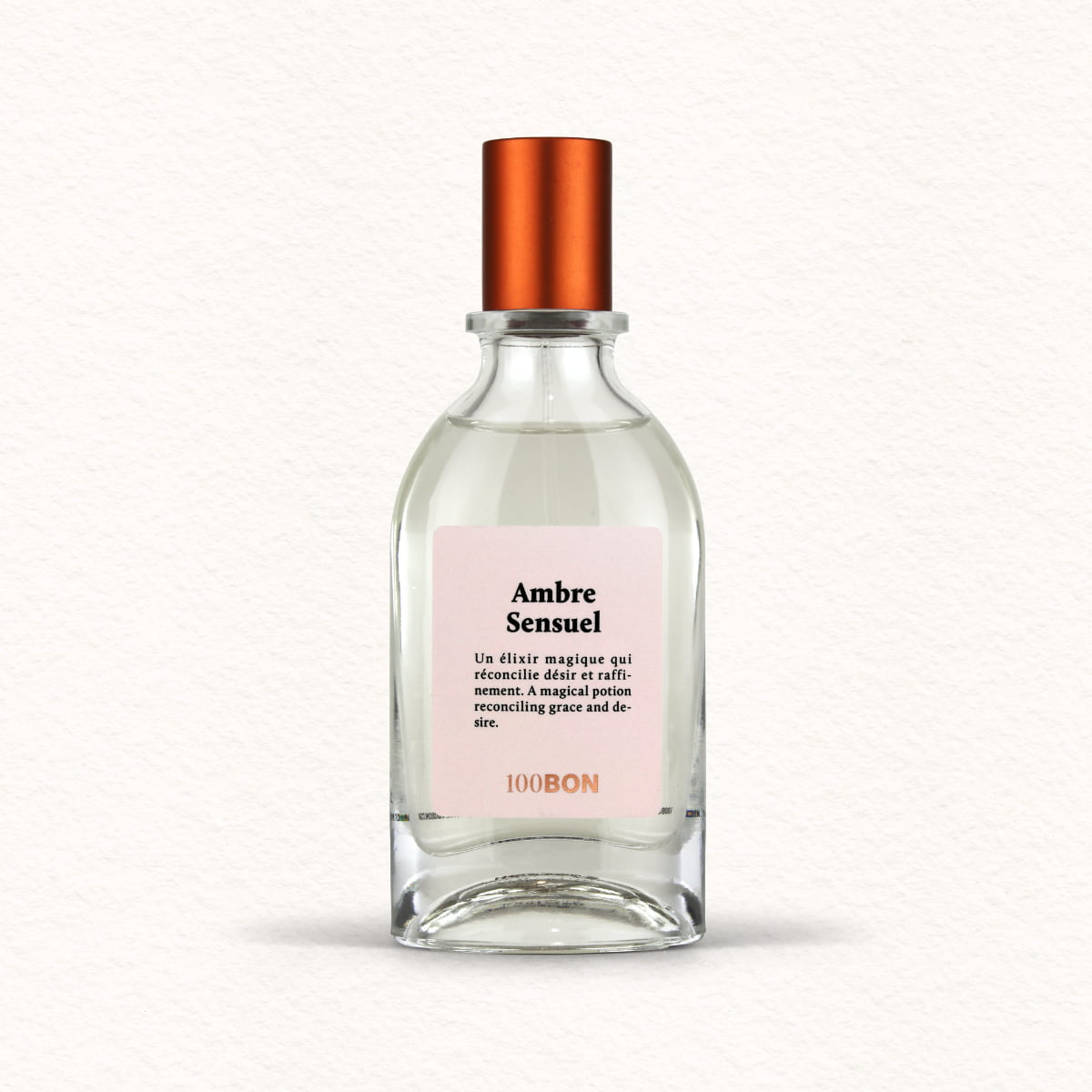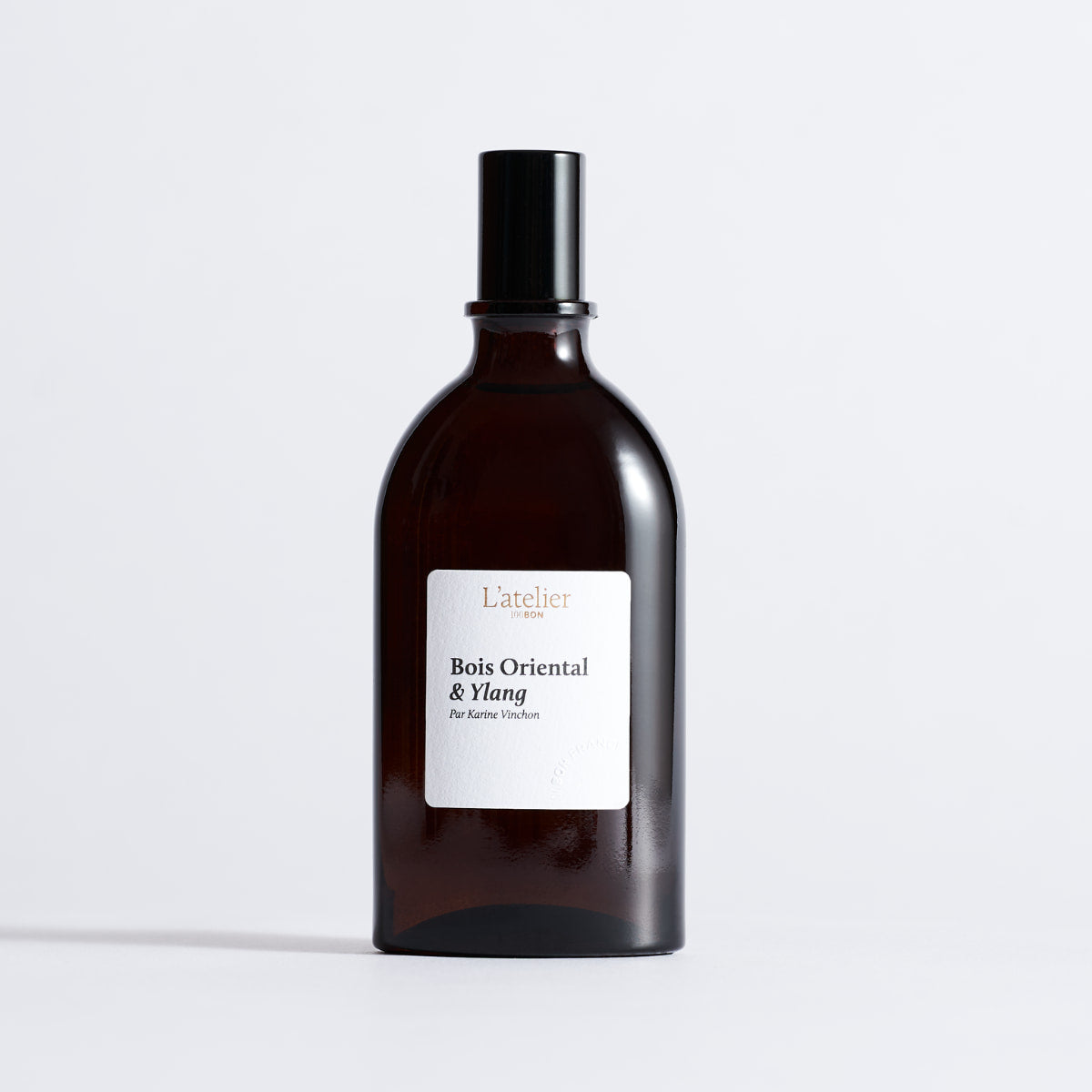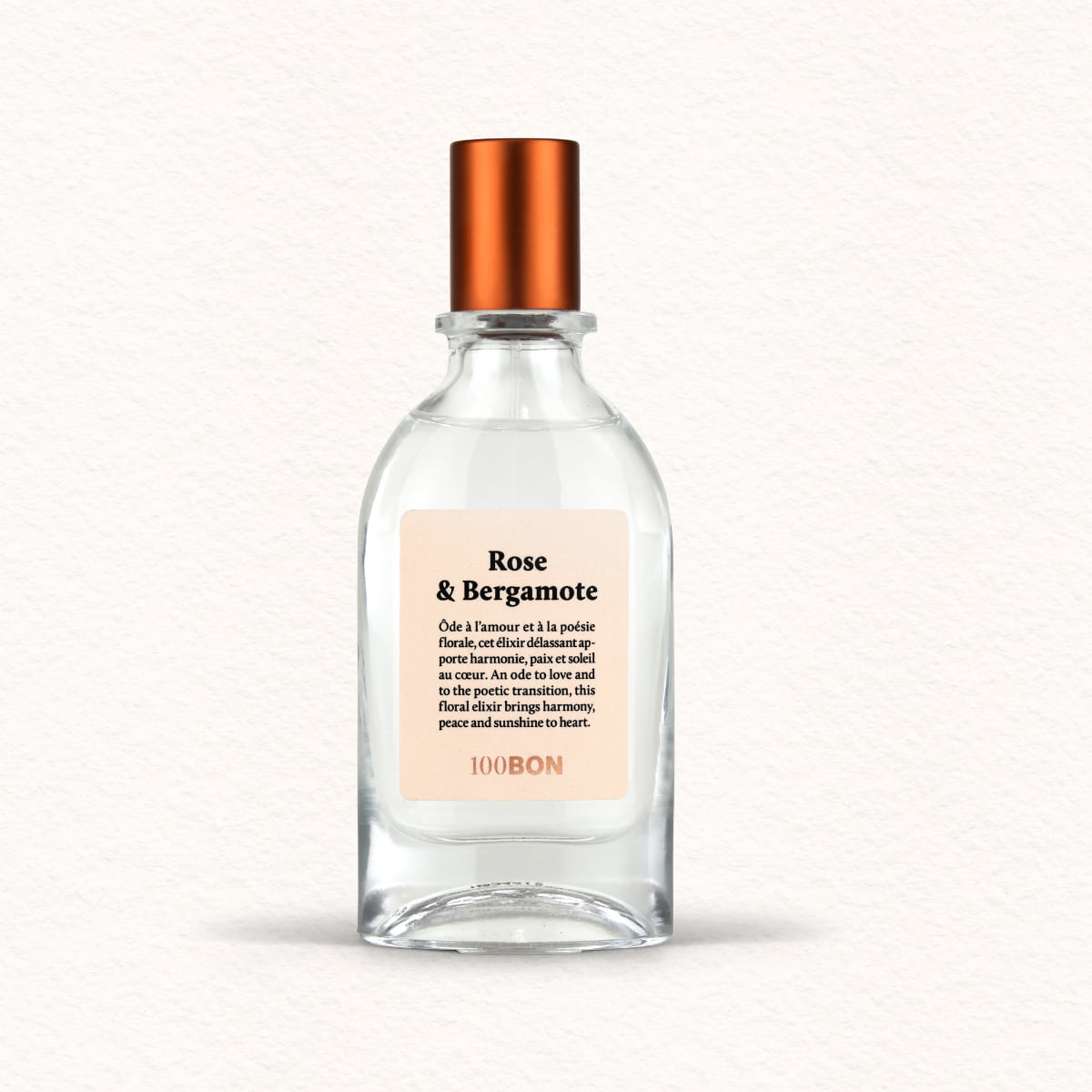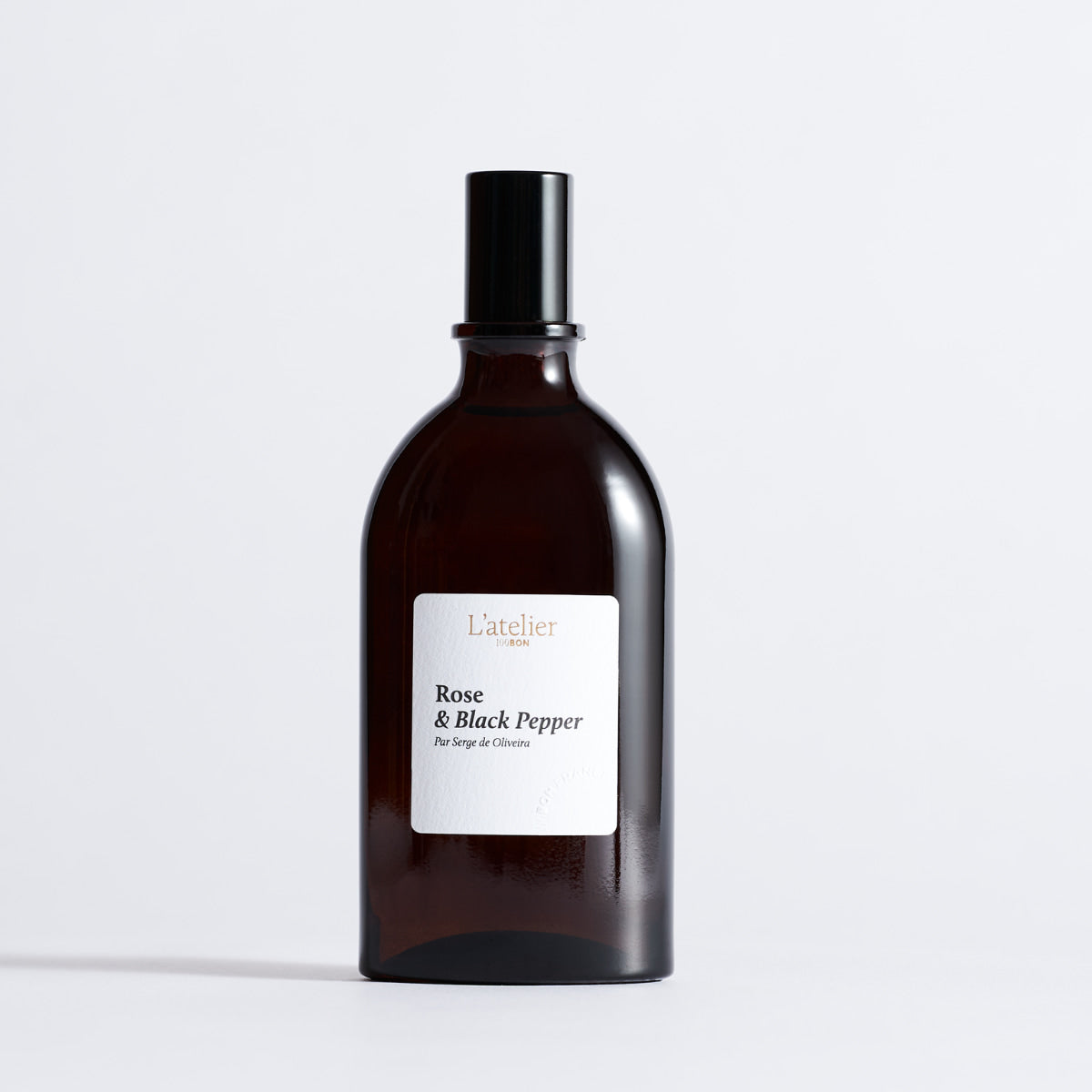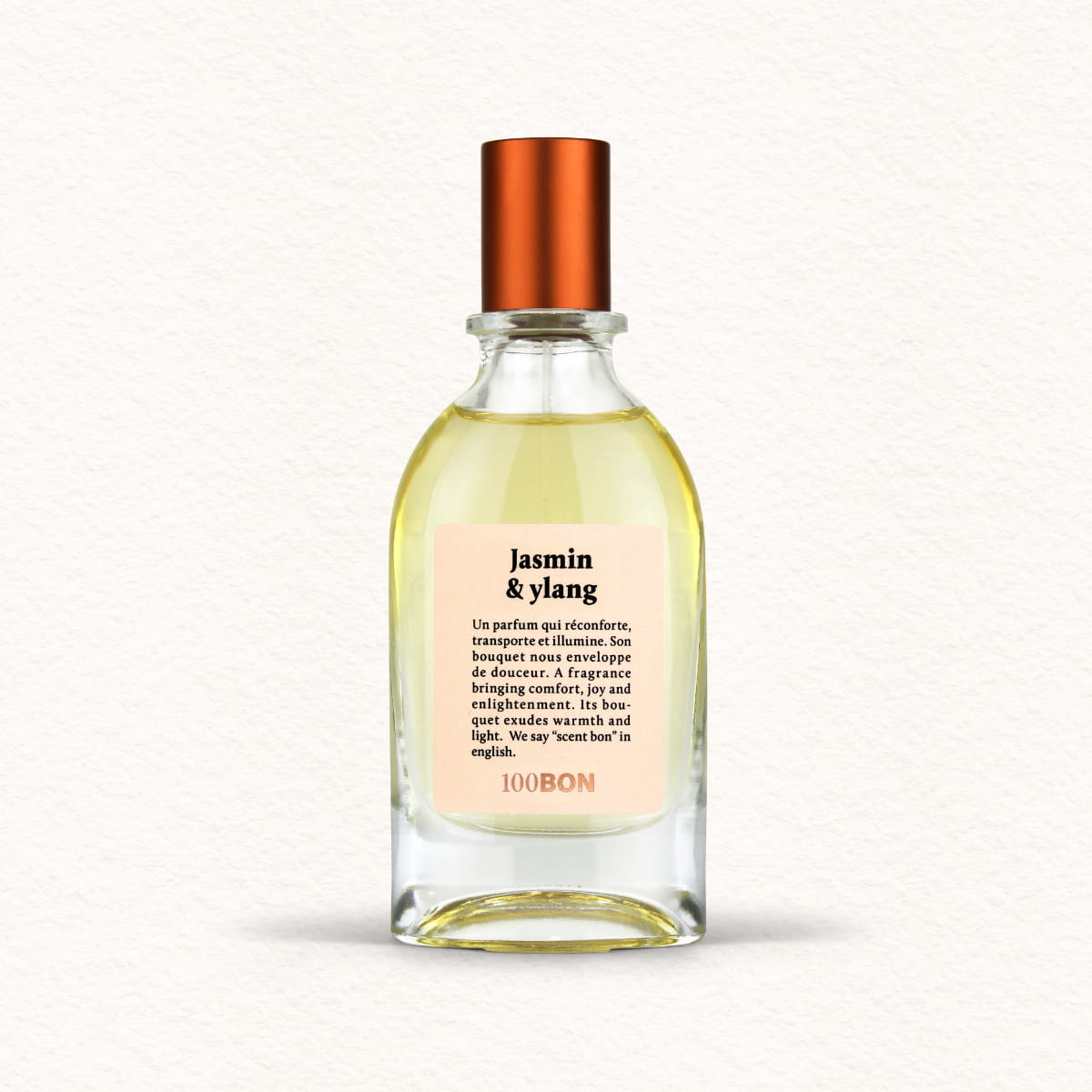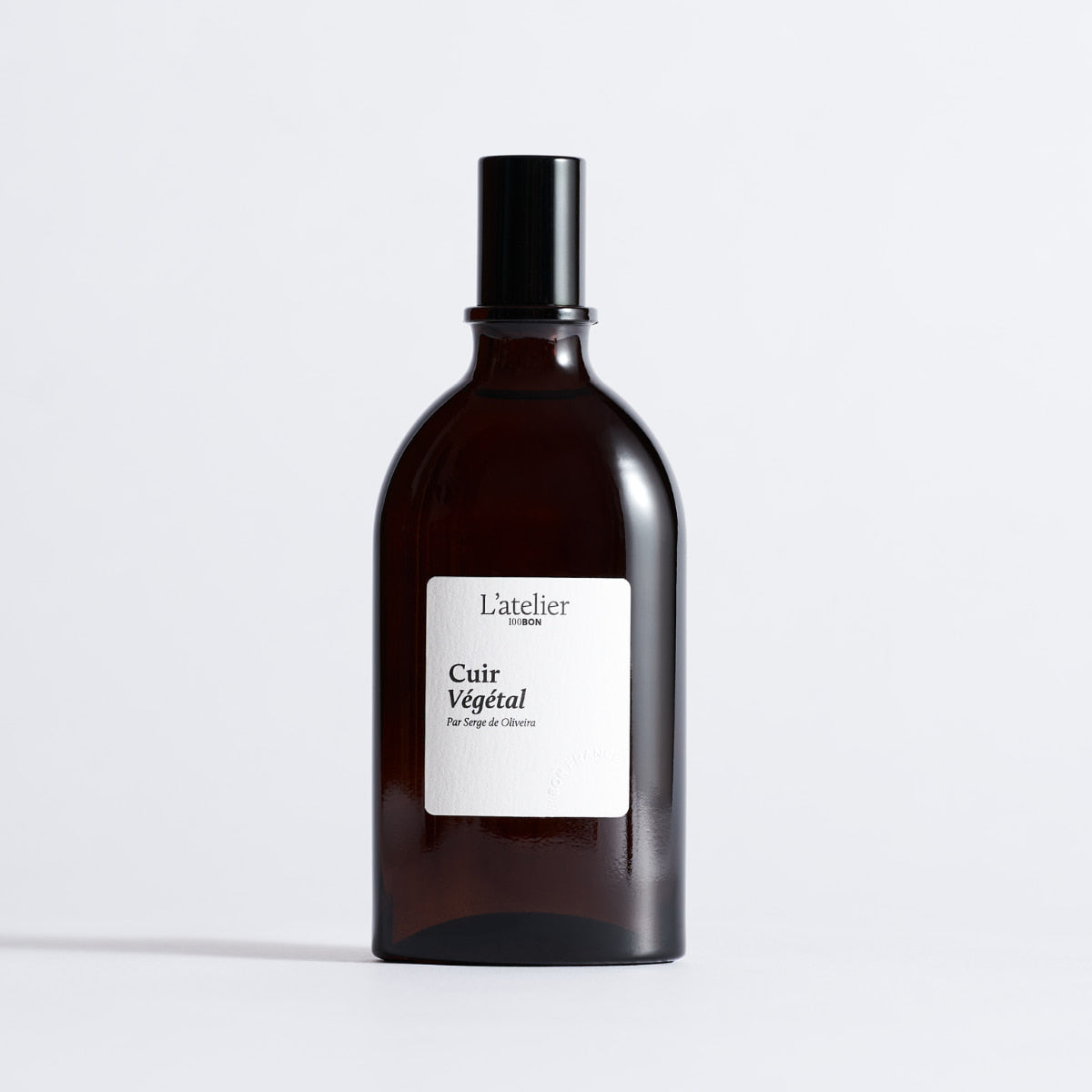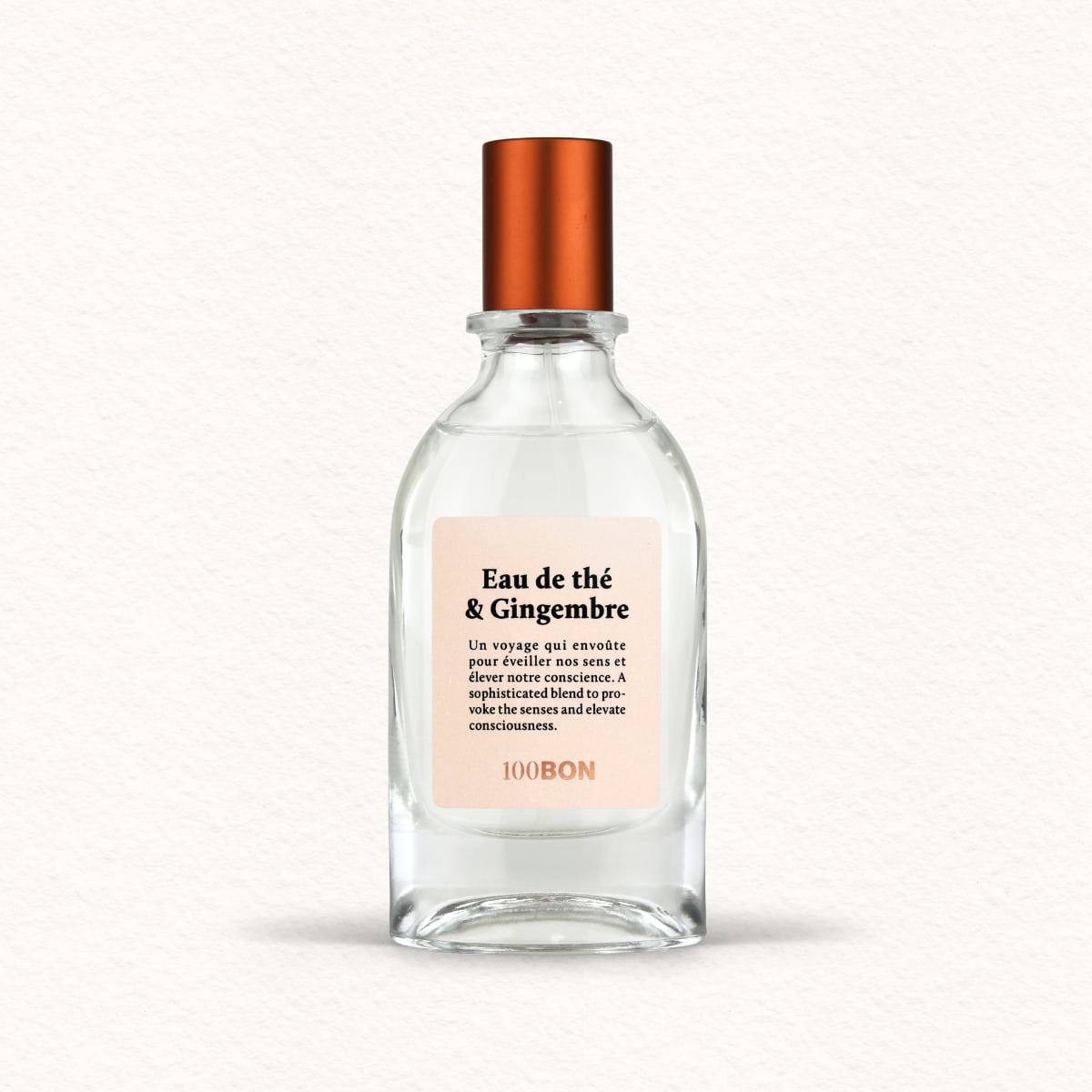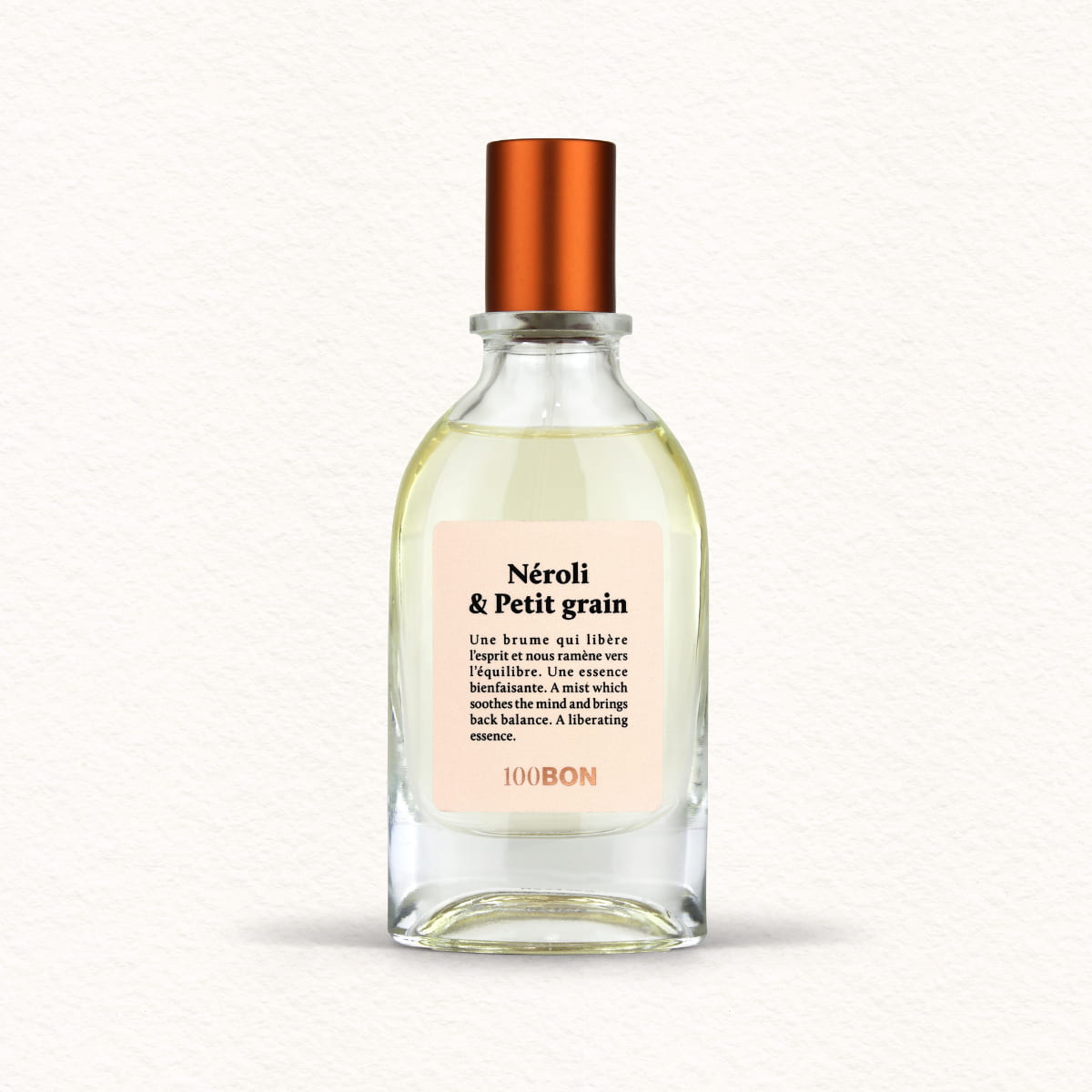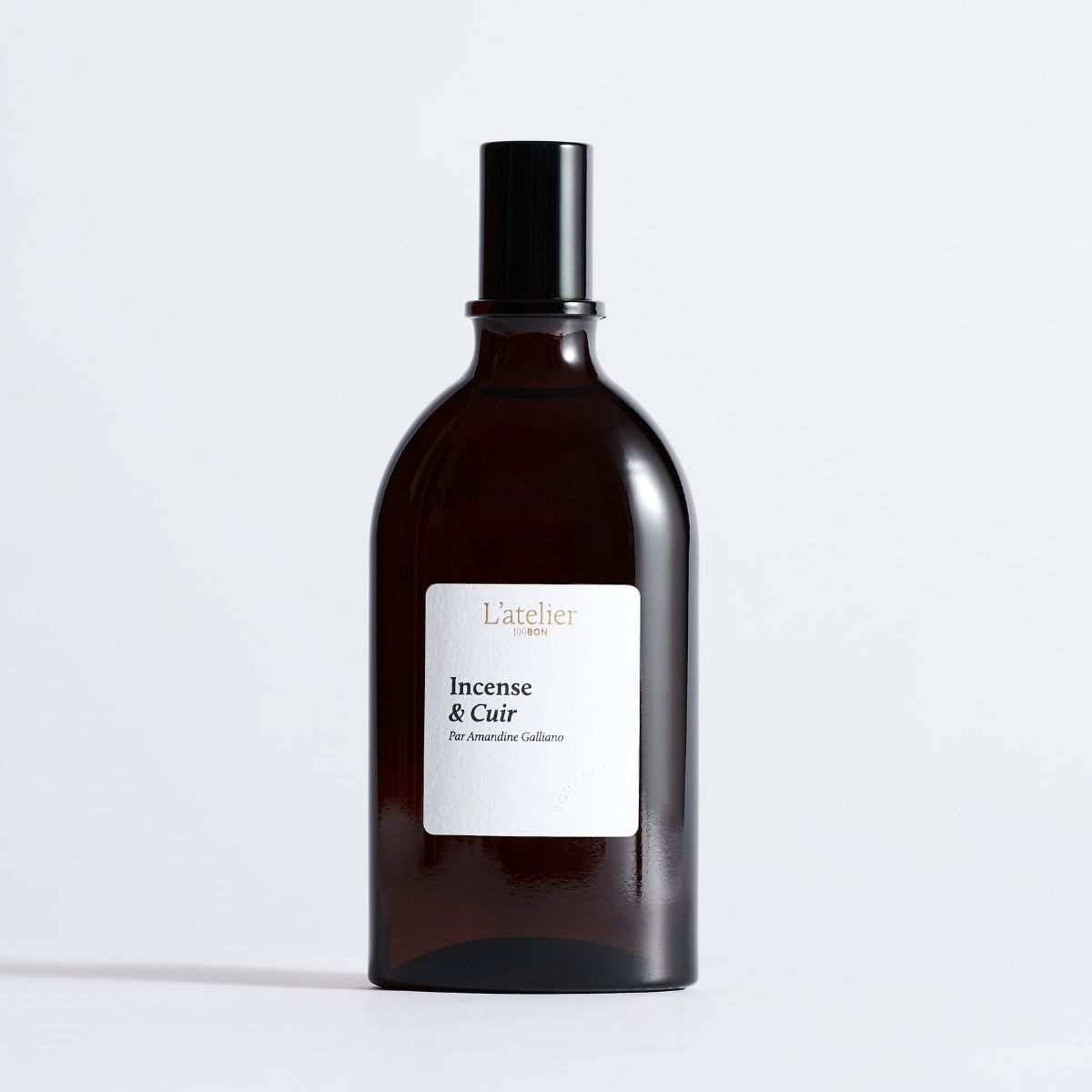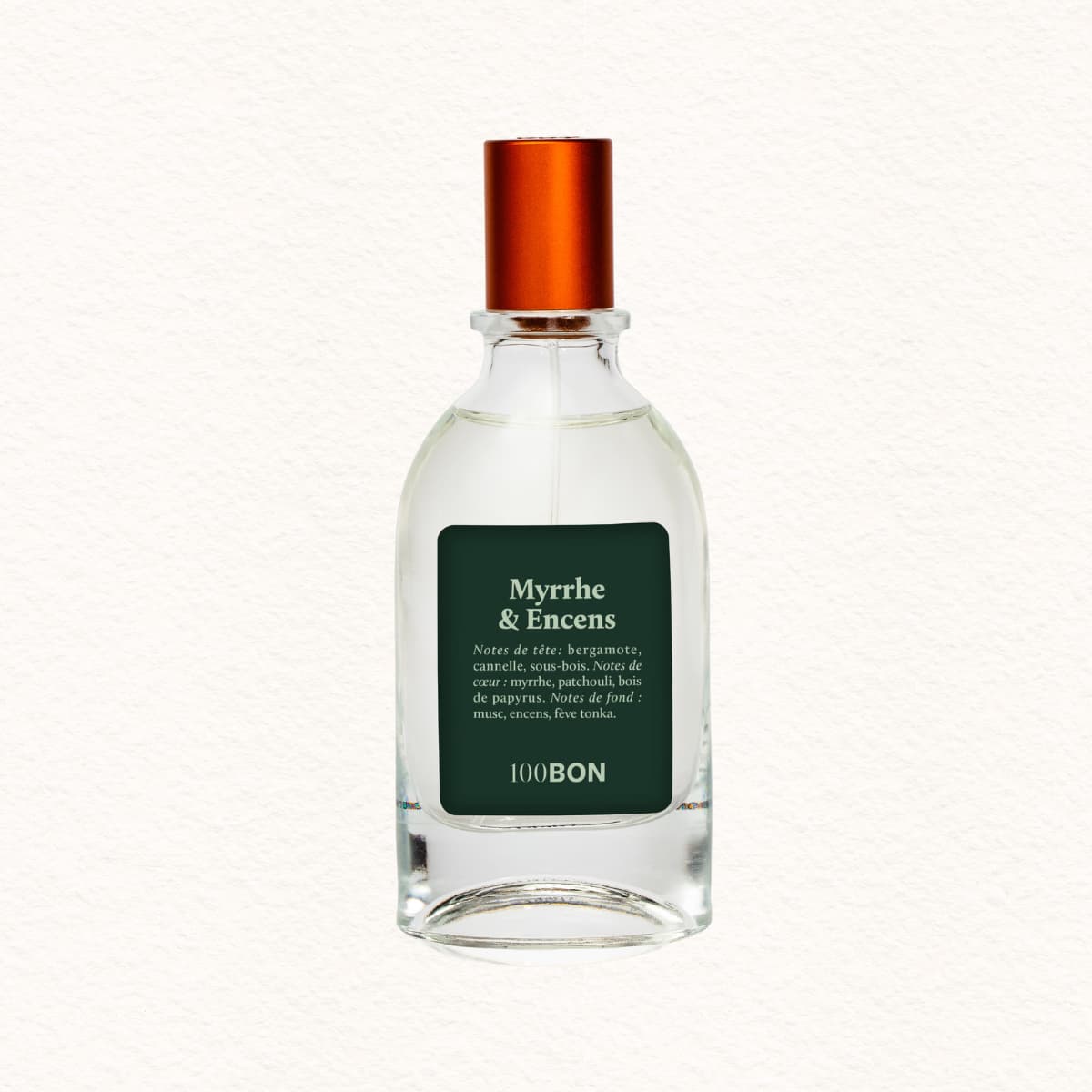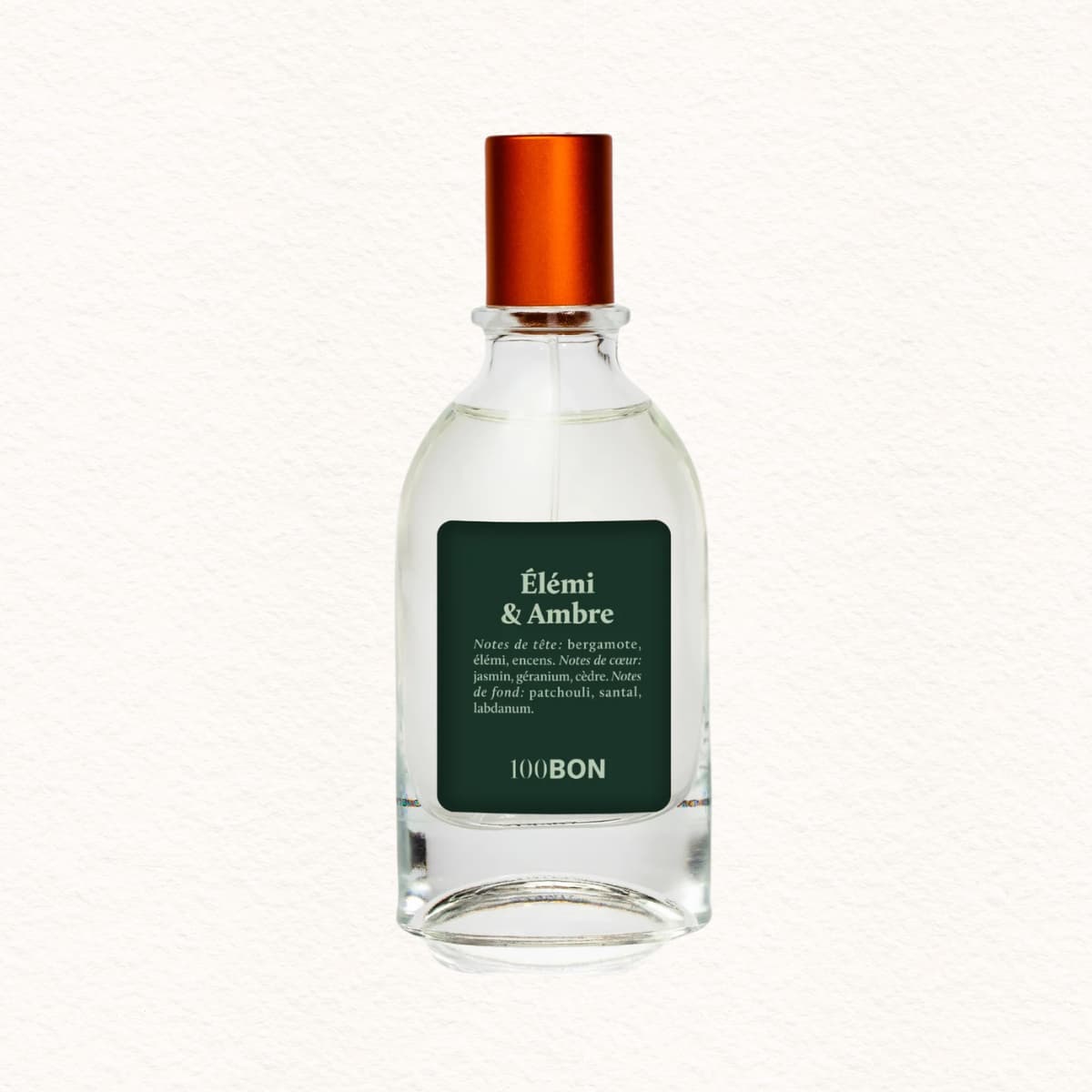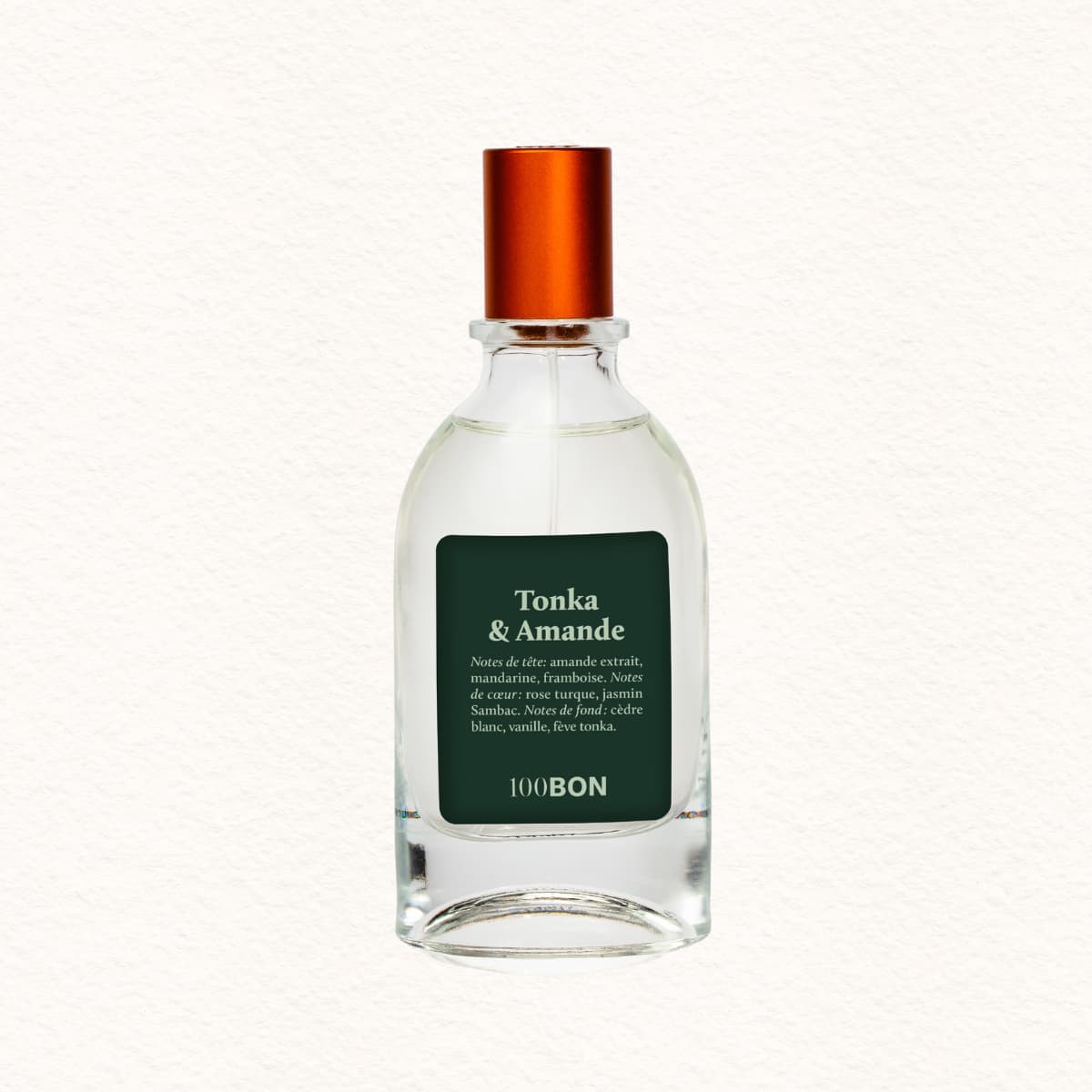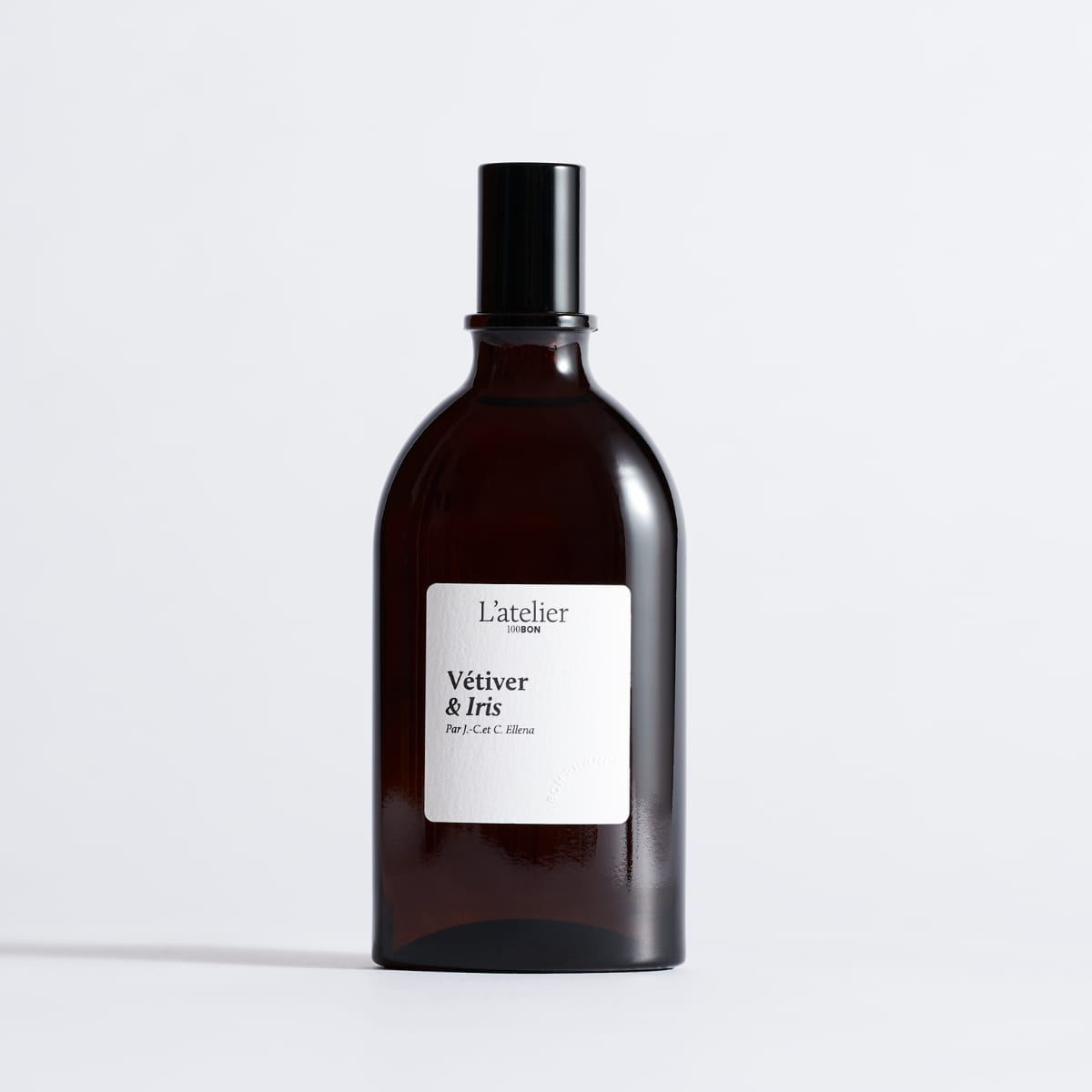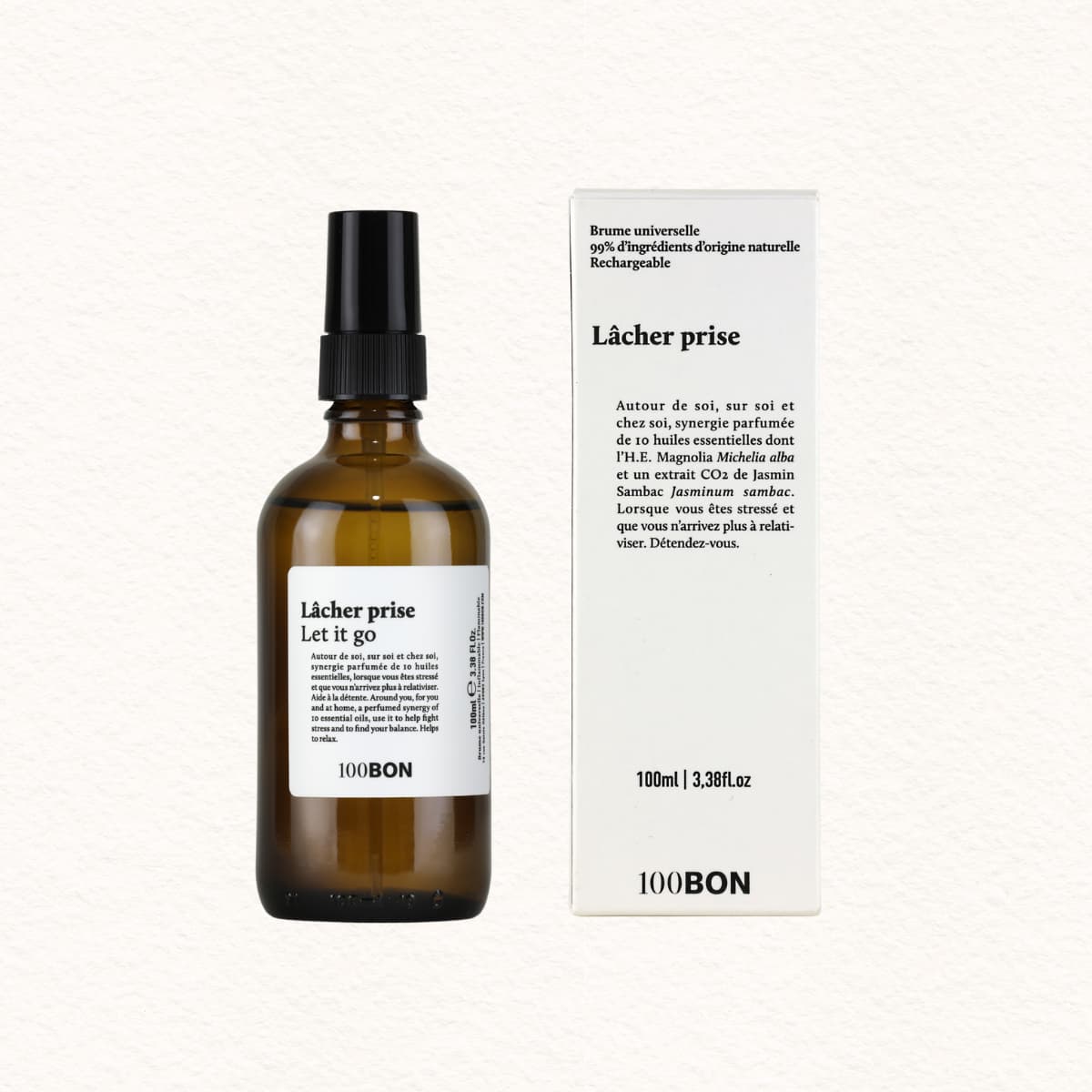These General Terms and Conditions of Sale (hereinafter referred to as the "General Conditions") apply to any purchase made by an internet user / individual (hereinafter referred to as the "CUSTOMER") on the website https://www.100bon.com/ (hereinafter referred to as the "SITE") from THE OTHERS PERFUMERS, a company registered with the Lyon Trade and Companies Register under number 819 421 413 000 17, with its registered office at 51 avenue du Maréchal Foch 69006 Lyon, France Tel: 04 78 72 40 89 email: contact@100bon.com (hereinafter referred to as the "SELLER"). IMPORTANT Any order placed on the SITE implies the CLIENT's unconditional acceptance of these general terms and conditions of sale.
Article 1. Definitions The terms used below have, in these General Conditions, the following meanings:
"CUSTOMER": refers to the SELLER's co-contractor, who guarantees that they have the status of consumer as defined by French law and case law. Accordingly, it is expressly provided that this CUSTOMER is acting outside of any habitual or commercial activity. "DELIVERY": refers to the first presentation of the PRODUCTS ordered by the CUSTOMER to the delivery address indicated during the order. "PRODUCTS": refers to all the products available on the SITE. "TERRITORY": refers to metropolitan France (excluding overseas departments and territories).
Article 2. Object
These General Conditions govern the sale by the SELLER to its CUSTOMERS of PRODUCTS. The CUSTOMER is clearly informed and acknowledges that the SITE is aimed at consumers and that professionals must contact the SELLER's commercial department in order to benefit from separate contractual conditions.
Article 3. Acceptance of the general conditions
The CUSTOMER agrees to carefully read these General Conditions and accept them before proceeding with the payment of an order for PRODUCTS placed on the SITE. These General Conditions are referenced at the bottom of each page of the SITE by means of a link and must be consulted before placing the order. The CUSTOMER is invited to carefully read, download, print the General Conditions and keep a copy of them. The SELLER advises the CUSTOMER to read the General Conditions for each new order, as the latest version of these Conditions applies to any new order of PRODUCTS. By clicking on the first button to place the order and then on the second to confirm said order, the CUSTOMER acknowledges having read, understood and accepted the General Conditions without limitation or condition.
Article 4. Purchase of products on the website
To be able to buy a PRODUCT, the CUSTOMER must be at least 18 years old and have the legal capacity or, if he is a minor, be able to justify the agreement of his legal representatives. The CUSTOMER will be asked to provide information allowing him to be identified by completing the form available on the SITE. The sign (*) indicates the mandatory fields that must be completed for the CLIENT's order to be processed by the SELLER. The CUSTOMER can check the status of his order on the SITE. Tracking of DELIVERIES may, where appropriate, be carried out using the online tracking tools of certain carriers. The CUSTOMER may also contact the SELLER's sales department at any time by e-mail, at contact@100bon.com, in order to obtain information on the status of his order. The information that the CUSTOMER provides to the SELLER when placing an order must be complete, accurate and up-to-date. The SELLER reserves the right to ask the CLIENT to confirm, by any appropriate means, his identity, his eligibility and the information communicated.
Article 5. Orders
Article 5.1 Characteristics of products
The SELLER undertakes to present the essential characteristics of the PRODUCTS (on the information sheets available on the SITE) and the mandatory information that the CUSTOMER must receive under applicable law (in these General Conditions). The CUSTOMER undertakes to read these information carefully before placing an order on the SITE. Unless expressly stated otherwise on the SITE, all PRODUCTS sold by the SELLER are new and comply with European legislation in force and applicable standards in France.
Article 5.2. Ordering procedure Orders for PRODUCTS are placed directly on the SITE. To place an order, the CUSTOMER must follow the steps described below (please note, however, that depending on the CUSTOMER's homepage, the steps may vary slightly).
5.2.1. Selection of products and purchase options
The CUSTOMER must select the desired PRODUCT(s) by clicking on the relevant PRODUCT(s) and choosing the desired characteristics and quantities. Once the PRODUCT is selected, the PRODUCT is placed in the CUSTOMER's cart. The CUSTOMER can then add as many PRODUCTS to his cart as he wishes.
5.2.2. Orders
Once the products are selected and placed in his cart, the CUSTOMER must click on the cart and verify that the content of his order is correct. If the CUSTOMER has not yet done so, he will then be prompted to log in or register. Once the CUSTOMER has validated the content of the cart and has logged in/registered, an online form will appear, automatically completed and summarizing the price, applicable taxes and, if applicable, delivery charges. The CUSTOMER is invited to verify the content of his order (including the quantity, characteristics and references of the PRODUCTS ordered, the billing address, the means of payment and the price) before validating its content. The CUSTOMER can then proceed to payment of the PRODUCTS by following the instructions on the SITE and provide all necessary information for billing and delivery of the PRODUCTS. Regarding PRODUCTS for which options are available, these specific references appear when the correct options have been selected. The orders placed must include all necessary information for the proper processing of the order. The CUSTOMER must also select the chosen delivery method.
5.2.3. Acknowledgment of receipt
Once all the steps described above are completed, a page appears on the SITE to acknowledge receipt of the CUSTOMER's order. A copy of the acknowledgment of receipt of the order is automatically sent to the CUSTOMER by email, provided that the email address communicated through the registration form is correct. The SELLER does not send any order confirmation by postal mail or fax.
5.2.4. Invoicing
During the ordering process, the CUSTOMER must enter the information necessary for invoicing (the symbol (*) will indicate the mandatory fields that must be filled in for the CUSTOMER's order to be processed by the SELLER). The CUSTOMER must in particular clearly indicate all information relating to delivery, in particular the exact delivery address, as well as any access code to the delivery address. The CUSTOMER must then specify the chosen means of payment. Neither the order form that the CUSTOMER establishes online nor the acknowledgment of receipt of the order that the SELLER sends to the CUSTOMER by email constitutes an invoice. Regardless of the ordering or payment method used, the customer may download the original invoice from their customer account or request it from customer service.
5.3. Order date
The order date is the date on which the SELLER acknowledges receipt of the order online. The deadlines indicated on the SITE only begin to run from this date.
5.4. Price
For all PRODUCTS, the CUSTOMER will find prices displayed on the SITE in euros, all taxes included, as well as applicable delivery charges
Article 6. Right of withdrawal
The terms and conditions for the right of withdrawal are provided in the "withdrawal policy", which is available in Annex 1 of these terms and accessible at the bottom of each page of the website via a hyperlink. The withdrawal form is available in accordance with the Hamon Law in your customer account, which you can access through the "my account" section on our website.
Article 7. Payment
7.1. Means of payment
The CLIENT can pay for their PRODUCTS online on the SITE using the means of payment proposed by the SELLER. The CLIENT guarantees the SELLER that they hold all necessary authorizations to use the chosen means of payment. The SELLER will take all necessary measures to ensure the security and confidentiality of data transmitted online in the context of online payment on the SITE. It is specified in this regard that all payment information provided on the SITE is transmitted to the SITE's bank and is not processed on the SITE.
7.2. Payment date
In the case of a single payment by credit card, the CLIENT's account will be debited as soon as the order for PRODUCTS is placed on the SITE. In the case of partial DELIVERY, the total amount will be debited from the CLIENT's account at the earliest when the first package is shipped. If the CLIENT decides to cancel their order for unavailable PRODUCTS, the refund will be made in accordance with the last paragraph of Article 5.5 of these General Conditions.
7.3. Late or refused payment
If the bank refuses to debit a card or other means of payment, the CLIENT must contact the SELLER's Customer Service in order to pay for the order by any other valid means of payment. In the event that, for any reason whatsoever, opposition, refusal or other, the transmission of the money flow due by the CLIENT proves impossible, the order will be cancelled and the sale automatically terminated.
Article 8. Proof and Archiving
Any contract concluded with the CLIENT for an order with a total amount greater than 120 euros including tax will be archived by the VENDOR for a period of ten (10) years in accordance with Article L. 134-2 of the Consumer Code. The VENDOR agrees to archive this information in order to ensure follow-up of transactions and to produce a copy of the contract at the CLIENT's request. In case of a dispute, the VENDOR will have the possibility to prove that its electronic tracking system is reliable and guarantees the integrity of the transaction.
Article 9. Transfer of ownership
The SELLER remains the owner of the PRODUCTS delivered until they are fully paid by the CLIENT. The above provisions do not prevent the transfer to the CLIENT, at the time of receipt by him, or by a third party designated by him other than the carrier, of the risks of loss or damage to the PRODUCTS subject to the retention of title, as well as the risks of damage that they may cause.
Article 10. Delivery
The delivery terms of the PRODUCTS are provided in the 'delivery policy' referred to in Annex 2 hereto and accessible at the bottom of each page of the SITE via a hyperlink.
Article 11. Packaging
The PRODUCTS will be packaged in accordance with current transport standards, in order to ensure maximum protection for the PRODUCTS during DELIVERY. CUSTOMERS agree to comply with the same standards when returning PRODUCTS under the conditions set out in Annex 1 - Withdrawal Policy.
Article 12. Warranties
12.1. Conformity Guarantee
The conformity guarantee, as stated in Article L.211-4 of the French Consumer Code, requires the seller to deliver a product that conforms to the contract and is free from any existing conformity defects at the time of delivery. The seller is also responsible for conformity defects resulting from packaging, assembly instructions, or installation, if these were under their responsibility. For a product to be considered compliant with the contract, it must be suitable for the customary use of a similar product and correspond to the description given by the seller on their website. In addition, the product must meet the qualities that a buyer can reasonably expect based on public declarations made by the seller, producer, or representative, including advertising and labeling. The seller may be held responsible for any conformity defects that exist at the time of delivery, and for defects resulting from packaging, assembly instructions, or installation if they were under their responsibility.
If a product has conformity defects, the customer has the right to choose between having it repaired or replaced. However, if the cost of the customer's choice is significantly higher than the other option, given the value of the product or the significance of the defect, the seller may choose to reimburse the customer instead. If repair or replacement is impossible, the seller must refund the price of the product within 30 days after receiving it back from the customer.
The conformity guarantee is valid for two years from the date of delivery of the product, as stated in Article L.211-12 of the Consumer Code. During the first six months following delivery, the customer does not have to provide proof of the existence of any conformity defect in the product.
12.2. Hidden Defects Warranty
The SELLER is held responsible for hidden defects of the PRODUCT sold which make it unfit for the use for which it is intended, or which reduce this use to such an extent that the CLIENT would not have acquired it, or would have given it a lower price, if they had known about them. (Article 1641 of the Civil Code) This warranty allows the CLIENT who can prove the existence of a hidden defect to choose between a refund of the price of the PRODUCT if it is returned and a refund of a part of its price if the PRODUCT is not returned. In the event that replacement or repair is impossible, the SELLER undertakes to refund the price of the PRODUCT within 30 days upon receipt of the returned PRODUCT and in exchange for the return of the PRODUCT by the CLIENT to the following address: 13 rue Sainte-Hélène 69002 LYON. The action resulting from hidden defects must be brought by the CLIENT within two (2) years from the discovery of the defect. (Article 1648, paragraph 1 of the Civil Code)
In addition to the legal warranties described above, the SELLER may offer commercial warranties or guarantees. The duration and conditions of such warranties or guarantees will be specified on the SITE or in the product documentation. These warranties or guarantees do not affect the legal warranties described above and do not exclude or limit the CLIENT's right to invoke the legal warranties described above.
Article 13. Liability
The responsibility of the SELLER can in no case be engaged in the event of non-performance or poor performance of the contractual obligations attributable to the CUSTOMER, in particular when entering his order. The SELLER cannot be held responsible, or considered to have failed hereunder, for any delay or non-performance, when the cause of the delay or non-performance is linked to a case of force majeure as defined by case law. French courts and tribunals. It is also specified that the SELLER does not control the websites that are directly or indirectly linked to the SITE. Consequently, it excludes all liability for the information published therein. Links to third party websites are provided for informational purposes only and no guarantee is provided as to their content.
Article 14. Protection of personal data
The Client is informed and agrees that their personal data may be collected on the Site and used by 100BON who acts as the data controller within the meaning of Regulation (EU) 2016/679 of the European Parliament and of the Council of 27 April 2016 on the protection of natural persons with regard to the processing of personal data and on the free movement of such data, and repealing Directive 95/46/EC (hereinafter referred to as the "General Data Protection Regulation" or "GDPR"). 100BON undertakes to protect and ensure the security and confidentiality of its Clients' personal data in accordance with the GDPR, in particular by taking all necessary precautions to prevent such data from being distorted, damaged or accessed by unauthorized third parties. In particular, the Clients' personal data may be transmitted to contractual providers and partners who, as sub-contractors within the meaning of the GDPR, are involved in and directly contribute to the management of Orders and for whom it is absolutely necessary to access the personal data provided by the Client when creating and using their Account (identity, postal address, telephone number, email address). Sub-contractors can only act on the instructions of 100BON. The Clients' personal data is collected for the following purposes: the management of Orders and relationships with Clients; informing Clients about commercial offers and information related to the brand; strengthening and improving communication on the Website and the brand by sending newsletters and special offers based on the Client's preferences noted on the Site; improving and personalizing the services offered to Clients; and complying with legal and regulatory obligations. The Client's personal data is only kept for the strictly necessary duration in view of the purposes outlined above. In accordance with the GDPR, the Client has the right of access, rectification and opposition to their personal data (hereinafter the "Computer and Liberties Rights"). To exercise one or more of the Computer and Liberties Rights, the Client must send a request by email or by post to the 100BON Customer Service, by filling in the contact form located on the Site or by writing to the following address, indicating their name, first name, email address and their client references: 100BON Customer Service, 13 rue Sainte Hélène, 69002 LYON FRANCE and indicating their name, first name, email address and their client references. Each request must be signed and accompanied by a photocopy of an identity document bearing the Client's signature and specifying the address for response. The response to the request made on the basis of one or more Computer and Liberties Rights will be sent within a period of 2 months following the receipt of the request. The Client may communicate special instructions to 100BON in which they define how they wish the Computer and Liberties Rights to be exercised after their death, in accordance with the GDPR.
Article 15. Claims
Any written claim from the CUSTOMER must be sent to the following address: 100BON, 13 rue Sainte-Hélène, 69002 Lyon. Exceptions to the right of withdrawal The right of withdrawal is excluded in the following cases: Supply of goods made to the CUSTOMER's specifications or clearly personalized Supply of goods that are liable to deteriorate or expire rapidly Supply of goods which are mixed inseparably with other articles by their nature Supply of sealed goods which are not suitable for return due to reasons of health or hygiene and which have been unsealed by the CUSTOMER after DELIVERY.
Article 16. Intellectual Property
All visual and sound elements of the SITE, including the underlying technology used, are protected by copyright, trademark and/or patent law. These elements are the exclusive property of the SELLER. Any person who edits a website and wishes to create a direct hypertext link to the SITE must request the written authorization of the SELLER. This authorization from the SELLER will not be granted definitively under any circumstances. This link must be removed at the request of the SELLER. Hypertext links to the SITE using techniques such as framing or in-line linking are strictly prohibited.
Article 17. Validity of the General Conditions
Any modification of the legislation or regulation in force, or any decision of a competent court invalidating one or more clauses of these General Conditions shall not affect the validity of these General Conditions. Such modification or decision shall in no way authorize CUSTOMERS to disregard these General Conditions. Any conditions not expressly dealt with herein shall be governed in accordance with the practices of the consumer commerce sector for companies whose registered office is located in France.
Article 18. Amendment of the General Conditions
These General Conditions apply to all online purchases made on the SITE as long as the SITE is available online. The General Conditions are dated precisely and may be modified and updated by the SELLER at any time. The General Conditions applicable are those in force at the time of the order. The modifications made to the General Conditions shall not apply to PRODUCTS already purchased.
Article 19. Jurisdiction and applicable law
These General Terms and Conditions, as well as the relationship between the CLIENT and the SELLER, are governed by French law. In the event of a dispute, only French courts shall have jurisdiction. However, prior to any recourse to arbitration or state courts, negotiation in a spirit of loyalty and good faith with a view to reaching an amicable agreement shall be privileged in the event of any conflict relating to this contract, including its validity. The party wishing to initiate the negotiation process shall inform the other party by registered letter with acknowledgment of receipt, indicating the elements of the conflict. If, at the end of a period of fifteen (15) days, the parties are unable to reach an agreement, the dispute shall be submitted to the competent jurisdiction designated below. During the entire negotiation process and until its conclusion, the parties shall refrain from taking any legal action against each other regarding the conflict subject to negotiation. However, the parties are authorized to apply to the summary judge or to request an order by application. Any action before the summary judge or the implementation of a procedure by application does not result in any waiver of the amicable settlement clause by the parties, unless expressly stated otherwise.
ANNEX 1 WITHDRAWAL POLICY
Principle of withdrawal: The CLIENT has the right to return or return the PRODUCT to the SELLER or a person designated by the latter, without undue delay, and at the latest within fourteen (14) days following the communication of his decision to withdraw, unless the SELLER proposes to recover the PRODUCT himself.
Withdrawal period: The withdrawal period expires fourteen (14) calendar days after the day on which the CLIENT, or a third party other than the carrier and designated by the CLIENT, physically takes possession of the PRODUCT. In the case where the CLIENT has ordered several PRODUCTS via a single order resulting in several DELIVERIES (or in the case of an order of a single PRODUCT delivered in several batches), the withdrawal period will expire fourteen (14) calendar days after the day on which the CLIENT, or a third party other than the carrier and designated by the CLIENT, physically takes possession of the last PRODUCT delivered.
Notification of the right of withdrawal: To exercise his right of withdrawal, the CLIENT must notify his decision to withdraw from this contract by means of an unambiguous statement to: 100BON 13 rue Sainte-Hélène 69002 Lyon or at contact@100bon.com. He can also use the form below:
WITHDRAWAL FORM To the attention of [] (Seller's contact information) Seller's telephone number: Seller's fax number: Seller's email address*:
I hereby notify you of my withdrawal from the contract for the sale of the following PRODUCT: PRODUCT reference number: Invoice number: Order number:
- Ordered on [__________]/received on [______________]
- Payment method used:
- Name of the CLIENT and, if applicable, the beneficiary of the order:
- CLIENT's address:
- Delivery address:
- CLIENT's signature (except in the case of transmission by email)
- Date
In order for the withdrawal period to be respected, the CLIENT must transmit his communication concerning the exercise of the right of withdrawal before the expiration of the withdrawal period.
Effects of withdrawal: In the event of withdrawal by the CLIENT, the SELLER undertakes to reimburse all sums paid, including delivery costs, without undue delay and in any event no later than fourteen (14) days from the day on which the SELLER is informed of the CLIENT's intention to withdraw. The SELLER will make the refund using the same means of payment as the one used by the CLIENT for the initial transaction, unless the CLIENT expressly agrees to a different means, in any case, this refund will not result in any fees for the client. The SELLER may defer the refund until receipt of the goods or until the CLIENT has provided proof of shipment of the goods, the date chosen being that of the first of these facts.
Condition of the returned goods The PRODUCT must be returned following the SELLER's instructions and must include all delivered accessories. In accordance with the applicable legal provisions, the customer has a period of fourteen (14) clear days from receipt of the product to exercise their right of withdrawal with the seller, without having to justify reasons or pay penalties, for exchange or refund, provided that the products are returned in their original packaging, with their security seal intact and in perfect condition within fourteen (14) days following the communication of their decision to withdraw. Returns must be made in their original and complete condition (packaging, accessories, etc.) allowing their return to the market in new condition. Damaged, soiled or incomplete products will not be accepted for return or refund.
Exclusions from the right of withdrawal The right of withdrawal is excluded in the following cases:
- Supply of goods or services whose price depends on fluctuations in the financial market
- Supply of goods made to the customer's specifications or clearly personalized
- Supply of goods likely to deteriorate or expire rapidly
- Supply of audio or video recordings or sealed software that has been unsealed after delivery
- Newspaper, periodical, magazine (except subscription contract)
- Provision of hosting services other than for residential purposes, transportation of goods, car rental, catering or leisure-related services if the offer provides for a specific execution date or period
- Supply of goods that are by their nature inseparably mixed with other items
- Supply of sealed goods that cannot be returned for reasons of health or hygiene and that have been unsealed by the CLIENT after DELIVERY
- Supply of alcoholic beverages whose price was agreed at the time of the sale contract, the delivery of which can only take place after 30 days and whose real value depends on fluctuations in the market beyond the control of the SELLER
- Supply of digital content not supplied on a tangible medium if performance has begun with the express prior consent of the consumer, who has also acknowledged that they will lose their right of withdrawal
- Contracts concluded at a public auction
ANNEX 2 DELIVERY POLICY
Delivery area The PRODUCTS offered can only be delivered within the TERRITORY. It is not possible to place an order for any delivery address located outside of this TERRITORY. The PRODUCTS are shipped to the delivery address(es) that the CLIENT has provided during the ordering process.
Shipping timeframes The timeframes for preparing an order and generating an invoice, prior to dispatching the PRODUCTS that are in stock, are indicated on the WEBSITE. These timeframes do not include weekends or public holidays. An email will be automatically sent to the CLIENT upon dispatch of the PRODUCTS, provided that the email address provided during registration is correct.
Delivery timeframes and costs During the ordering process, the SELLER informs the CLIENT of the possible shipping timeframes and options for the purchased PRODUCTS. The shipping costs are calculated based on the mode of delivery. The amount of these costs will be due by the CLIENT in addition to the price of the purchased PRODUCTS. The details of the delivery timeframes and costs are provided on the WEBSITE.
Delivery terms The package will be handed over to the CLIENT upon signature and presentation of an identity document. In case of absence, a delivery notice will be left for the CLIENT, enabling them to pick up their package at their post office.
Delivery issues The CLIENT is informed of the delivery date when selecting the carrier, at the end of the online ordering process, before confirming the order. It is specified that deliveries will be made within a maximum of thirty (30) days. In the event of a delay, the CLIENT must request that the SELLER deliver within a reasonable timeframe, and if no delivery is made within this timeframe, the CLIENT may terminate the contract. The SELLER will reimburse the CLIENT, without undue delay from receipt of the termination letter, for the total amount paid for the PRODUCTS, including taxes and delivery fees, using the same payment method that the CLIENT used to purchase the PRODUCTS. The SELLER is responsible for the PRODUCTS until they are delivered to the CLIENT. It is reminded that the CLIENT has a period of three (3) days to notify the carrier of any damage or partial loss observed during delivery.
 Absynthe
Absynthe
 Amyris
Amyris
 Juniper Berry
Juniper Berry
 Pink berry
Pink berry
 Basil
Basil
 Tolu balm
Tolu balm
 Benzoin
Benzoin
 Bergamot
Bergamot
 Mangrove wood
Mangrove wood
 Blackcurrant bud
Blackcurrant bud
 Coffee
Coffee
 Cardamom
Cardamom
 Cedrat
Cedrat
 Atlas Cedar
Atlas Cedar
 Virginia Cedar
Virginia Cedar
 Lemon
Lemon
 Incense
Incense
 Fenugreek
Fenugreek
 Tonka bean
Tonka bean
 Guaiac
Guaiac
 Geranium
Geranium
 Ginger
Ginger
 Clove
Clove
 Carrot seed
Carrot seed
 Iris Pallida
Iris Pallida
 Jasmine Sambac
Jasmine Sambac
 Labdanum
Labdanum
 Lemongrass
Lemongrass
 Mandarin
Mandarin
 Oak moss
Oak moss
 Myrrh
Myrrh
 Neo-Santal
Neo-Santal
 Neroli
Neroli
 Nutmeg
Nutmeg
 Blood orange
Blood orange
 Papyrus
Papyrus
 Patchouli
Patchouli
 Rose petals
Rose petals
 Petitgrain bigarade
Petitgrain bigarade
 Black pepper
Black pepper
 Saffron
Saffron
 Bourbon vanilla
Bourbon vanilla
 Vetiver Haiti
Vetiver Haiti
 Ylang-ylang
Ylang-ylang














































